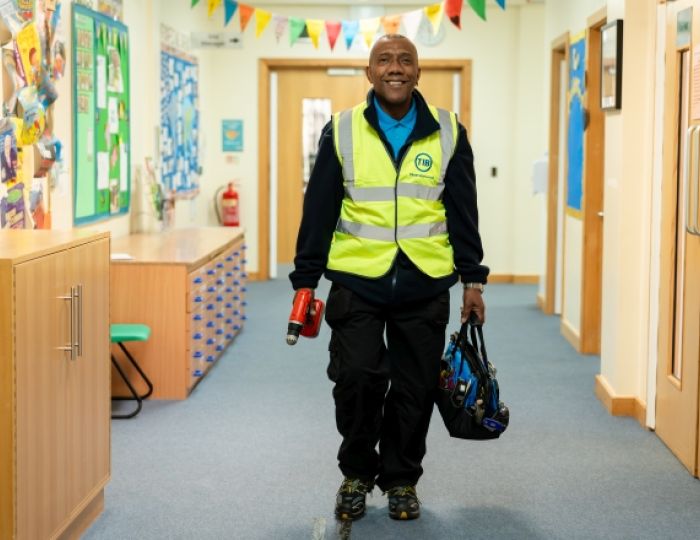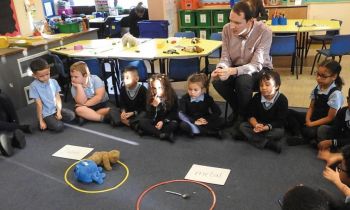Have you ever had a day where you’ve felt demotivated, struggled to concentrate, and got very little done as a consequence?
That’s a rhetorical question, because the overwhelming chance is that you have. And most of us will have looked back with the benefit of hindsight and been able to identify why – perhaps we were upset, stressed or anxious and that was feeding in to our inability to have a productive day.
Most emotionally-aware adults will be able to recognise when there’s something impacting their ability to focus on a task, learn something new, or to engage fully with the people around them. We can link the emotion with the resulting behaviour. This doesn’t just apply when we experience major, life-changing events which are likely to impact us in the long-term – it applies to all of the fleeting emotional states we regularly find ourselves in too.
A huge traumatic event can completely derail every aspect of your life, but equally something as simple as being tired or anxious will decrease your capacity for concentration, motivation or full immersion in a specific activity. Conversely, feeling positive emotions will help us in all aspects of life from concentration to creativity.
Behaviour and emotional needs
Research tells us that positive emotions don’t just have momentary impact either. Experiencing inspiration, social connection and acts of kindness can actually enhance physical and mental health, relationships, family unity and future prospects – alongside significantly enhancing our ability to emotionally regulate.
With that in mind, why is it that we often neglect to make the link between underlying emotions and a child’s ability to play a full and active role in classroom life?
Far too many of us will have heard a child described as ‘naughty’ because of the behaviours they may display – and often it’s only in the rare cases where this behaviour necessitates professional support that the link between the underlying emotion and the resulting action is uncovered.
Where a child may be progressing at a slower rate than their peers, or they find it tough to concentrate fully on the activity they’re doing at the time, how often do we stop and consider why?
It’s totally understandable as a teacher when you have up to 30 pupils in your care that it’s difficult to take a metaphorical step back and identify the emotions which may be contributing to this behaviour.
Finding the time to encourage the emotions which can positively impact classroom life might also be challenging – and yet there’s a school of thought known as Positive Psychology which demonstrates just how impactive this would be.
Positive Psychology is founded in the knowledge that experiencing emotions with favourable connotations can impact our creative thinking, cognition, and processing and allow us to more easily exhibit all those ideal behaviours.
Dr Barbara Frederickson coined the term ‘micro moments of positivity’ which could be something as simple as sharing a smile or laugh with a friend. Children need a rich diet of these micro moments in order to broaden the scope of their thoughts and actions (which increases their ability to be creative and abstract), and build personal resources (intellectual, physical, social, and psychological).
There are many potential benefits of positive psychology for children, including an increase in self-esteem, improved relationships, and a greater outlook on life, which ultimately impacts their resilience, optimism and mental health.
Why we respond to positive psychology
In addition to the reams of scientific research we have at our disposal which explains why our brains respond so well to Positive Psychology, we also have plenty of anecdotal evidence showing how well the techniques work. I’ve personally seen this happen when working with children to implement my CalmBrain approach in their school; the founding principles of the approach include Positive Psychology and the science behind brain development.
CalmBrain incorporates different modules of music and scientifically-researched, neurologically-sensitive movements, all of which have a very specific focus – such as joy or connection – and I’ve seen pupils’ entire experience of school life turned round because of it countless times.
One such example was a little girl who was being bullied at school; she was an asylum seeker and had been isolated from, and rejected by, her peers because of the language barrier.
By starting to enjoy music and movements focused around the emotion of ‘joy’ (with the whole class undertaking these activities on a regular basis), she was able to nurture positive relationships and begin connecting with the other children in her class.
It sounds almost too simple to be true, but by focusing on ‘joy’ and experiencing that positive emotion together regularly, they reaped the individual and collective benefits. It was beneficial not just for the little girl I was directly working with, but the whole class too.
Grief and positive psychology
In another school, I worked with a 10-year-old whose mother had passed away – she was sad, lonely, showing little interest in school work, and isolating herself from the class. She wasn’t benefiting from bereavement counselling because she wasn’t emotionally stable enough for it to have an impact.
It was important that school was a safe haven for her, as there were many positive adults dedicated to helping her. I introduced movements concentrated on the emotion of ‘amusement’ based upon being silly.
Moving around like a penguin evoked the natural laughter response from her, and her peers were subsequently able to join together with her in a collective sense of healing.
Through this, she started releasing the tension and grief held in her body as it allowed her to experience emotional balance. The body relies on the expression of positive emotions to find balance after a trauma and bring about harmony with the mind – and using the movements to unlock this allowed this young girl to start receiving support from her friends, school and counsellor.
By evoking intense experiences of positive emotions repeatedly through the day in the classroom setting, children are able to significantly reduce stress and anxiety levels as part of a programme which ultimately challenges negative mental health and champions emotional wellbeing - enabling them to flourish within a hugely positive learning space. A teacher’s remit is very much about helping children understand the world around them – whether that’s through introducing science, reading, history or maths.
An integral part of this is linking the behaviours they exhibit with the emotions underlying them, and introducing them to (and then reinforcing) all those positive emotions which are going to enhance their lives and their ability to fully take part in classroom activities. Overlooking the developmental benefits of experiencing positive emotions means we’re disadvantaging our children in the classroom and into their adult lives too.
Using positive psychology in the classroom
Spending just two to three minutes evoking positive emotions at key transition times during the day (before or after break or lunch, and/or before home-time) has a real impact on pupils. And, to get the very best response from the children, staff need to be fully engaged too and create a nurturing environment.
Staff joining in, particularly when concentrating on moods such as ‘joy’ and ‘amusement’, which are working the area of the brain responsible for attachment, can help develop positive relationships between the whole class.
Movement and mental health
Children should be challenged by the movements linked to these emotions as this will develop and reorganise their brain – the results of which will be clear through improved coordination and movement. Individual programmes of music and movement can be introduced to help children who are particularly finding the classroom environment difficult.
Developing whole-school wellbeing
Improvements don’t happen immediately, but repeated practise will see motor, emotional, social and cognitive functioning develop over time.
Dr Sarah Taylor is a Consultant Clinical Psychologist, and the creator of CalmBrain.










